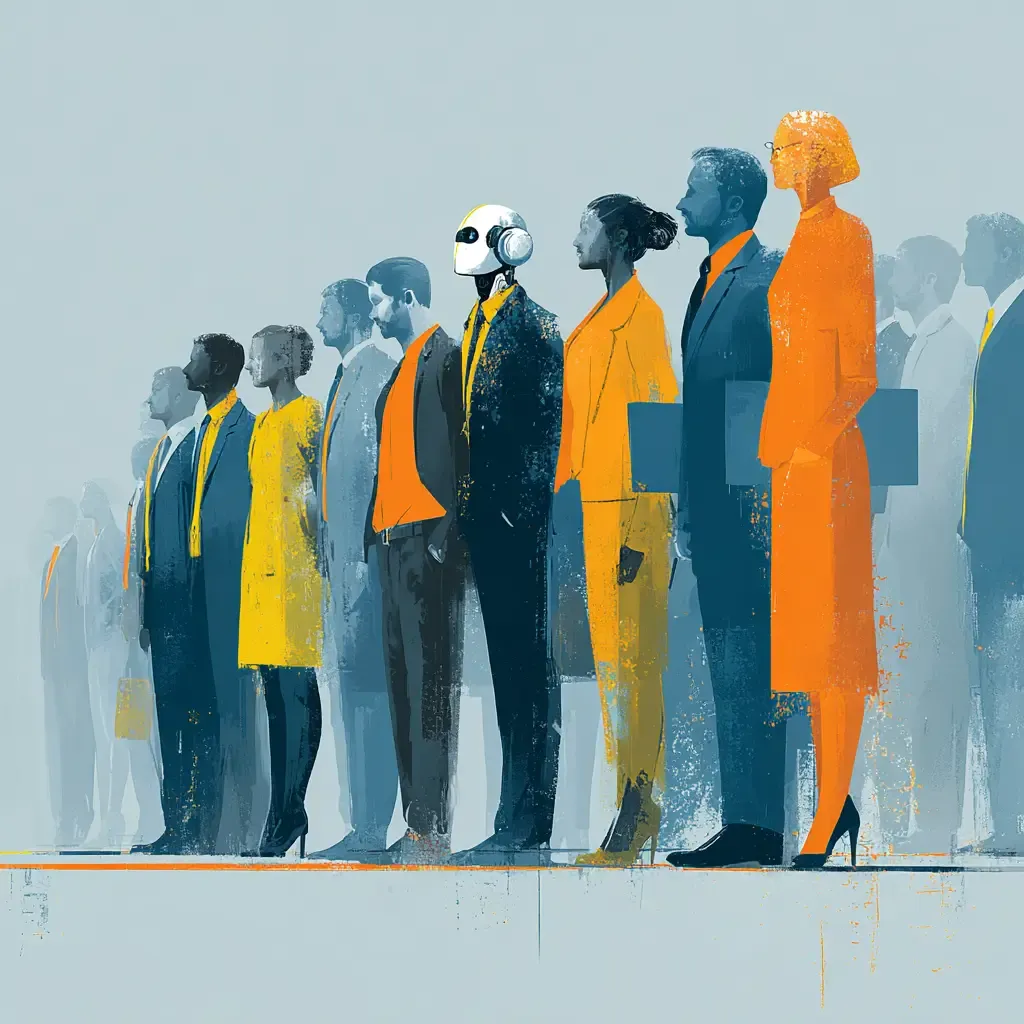Going beyond “understanding resistance” and using real empathy as a leadership tool—without burning yourself out emotionally.
TL;DR
Tactical empathy helps change leaders engage with resistance more effectively by using empathy as a strategic tool—not just an emotional reflex. This article shows you how to apply it without losing boundaries, burning out, or crossing ethical lines.
1. Empathy Isn’t a Soft Skill. It’s a Sharp One.
In change management, we’re taught to anticipate resistance. We model stakeholder reactions, map out personas, and prepare carefully crafted communications. But there’s a difference between understanding resistance and engaging with it meaningfully.
That’s where tactical empathy comes in.
Coined in the world of hostage negotiation and popularized in business circles by Chris Voss, tactical empathy is the deliberate practice of recognizing another person’s perspective—and using that recognition strategically. It’s not about agreeing. It’s not about placating. And it’s definitely not about absorbing every stakeholder’s emotional energy until you’re drained.
Tactical empathy is the sharp-edged tool you didn’t know you needed.
2. What Change Practitioners Get Wrong About Empathy
Many of us were trained to “listen actively” and “validate feelings”—which is good advice, up to a point. But in fast-moving, high-stakes change efforts, passive empathy often turns into emotional labor. We over-identify with those we’re trying to support. We confuse their fear with our failure. And in the name of being empathic, we end up absorbing stress we can’t afford to carry.
The truth? You can’t lead effectively if you’re drowning in everyone else’s feelings.
Tactical empathy means staying attuned without losing yourself. It requires emotional boundaries, psychological flexibility, and an unshakable focus on outcomes. It’s empathy with intention. Empathy that does something.
3. The Shift: From Mirror to Laser
Let’s break this down in practitioner terms.
- Passive empathy reflects emotion like a mirror. “You’re frustrated. I hear you.”
- Tactical empathy channels that emotion like a laser. “You’re frustrated. Let’s talk about what’s at risk and what you need to move forward.”
This is the key: Tactical empathy isn’t just emotional validation—it’s a way to diagnose, disarm, and direct.
When a leader resists a change, the passive empath listens and sympathizes. The tactical empath peels back the layers and uncovers what’s really driving the resistance: fear of irrelevance, loss of control, lack of clarity. Then they use that insight to guide the conversation, build trust, and shift behavior.
Tactical empathy creates traction.
4. Common Traps (and How to Avoid Them)
Here’s where even seasoned change pros can get tripped up:
Trap 1: Over-identifying with the audience
When you feel their pain too deeply, you lose objectivity—and the ability to act decisively.
Fix: Stay grounded in your role. You’re not here to rescue people from discomfort. You’re here to help them move through it.
Trap 2: Confusing empathy with agreement
Empathy doesn’t mean you endorse every stakeholder complaint. It means you understand their position and can engage with it constructively.
Fix: Practice the phrase: “I see where you’re coming from—and here’s what we need to do next.”
Trap 3: Using empathy as a performance
If you’re trying to “look” empathic without actually being present, it rings hollow. People can tell.
Fix: Slow down. Listen for emotion, not just words. And stay curious.
5. Building Your Tactical Empathy Toolkit
So how do you do this in practice? Here are a few tools and habits to build into your daily approach:
Label emotions out loud
This sounds simple, but it’s surprisingly effective. “It sounds like you’re frustrated by how fast this is moving.” When people feel seen, they stop escalating.
Use calibrated questions
Instead of “Why are you against this?”, try: “What concerns you most about how this will impact your team?” That opens the door instead of shutting it.
Mirror and pivot
Repeat the last 1–2 key words your stakeholder said (mirroring), then pivot the conversation toward action:
Them: “This process is completely broken.”
You: “Completely broken?”
Them: “Yeah, it’s missing critical steps.”
You: “What would a fix need to include, in your view?”
Don’t skip self-regulation
You can’t deploy empathy if your nervous system is fried. Tactical empathy requires emotional control. Build in recovery habits: take a walk, journal, vent to a peer—not a stakeholder.
6. Apply It Up, Down, and Across
Tactical empathy works with front-line employees. It works with executives. It works in cross-functional meetings where nobody agrees on scope.
It’s especially effective in these moments:
- In one-on-one resistance conversations
Stakeholders are less likely to say “yes” if they don’t feel heard first. Empathy earns you the right to influence. - In executive briefings
You don’t have to mirror their behavior. You mirror their concern and shift into forward motion:
“This seems to be a key pressure point for your org. Here’s how we’re addressing it.” - In team retrospectives
Use empathy to uncover root causes without assigning blame.
“It sounds like folks felt set up to fail. Let’s talk about where we can tighten the process.”
7. Empathy Without Burnout
Let’s get real. If you practice tactical empathy all day, you will still burn out—unless you build your off-ramp.
That means:
- Creating boundaries around when and how people can “download” to you.
- Letting go of the need to fix everything.
- Keeping a peer circle where you can be heard.
Tactical empathy isn’t about giving your emotional labor away. It’s about using your presence and insight as leverage. And leverage works best when it’s not overloaded.
8. When to Dial It Down
Sometimes the most empathetic thing you can do… is not engage emotionally at all.
- When someone is venting but not receptive.
- When the issue is systemic, not personal.
- When empathy will distract from accountability.
Tactical empathy is like any sharp tool. Know when to wield it—and when to holster it.
9. Final Thought
Empathy isn’t just “being nice.” For change leaders, it’s a strategic act of listening, interpreting, and guiding. Tactical empathy gives us the edge: It builds trust without capitulation, connection without co-dependence.
And best of all? You don’t have to lose yourself to do it.
ChangeGuild: Power to the Practitioner™
Frequently Asked Questions
What is tactical empathy?
Tactical empathy is the deliberate practice of identifying, acknowledging, and strategically using someone’s emotional state or perspective to guide conversations and influence outcomes. It goes beyond listening—it’s empathy with intent.
How is tactical empathy different from traditional empathy?
Traditional empathy often focuses on feeling what someone else feels. Tactical empathy, on the other hand, requires staying grounded and using insight into someone’s emotional state to create movement, clarity, or resolution—without taking on their emotions as your own.
Can tactical empathy work with executives or senior leaders?
Absolutely. In fact, it’s often most effective in high-pressure conversations with leaders who may be masking deeper concerns. Tactical empathy helps you cut through posturing and surface what matters, quickly and respectfully.
How do I use tactical empathy without burning out?
Set boundaries around when and how you engage. Use tools like mirroring, calibrated questions, and labeling—not emotional labor—to move conversations forward. And make space for your own recovery, reflection, and support.
What are some signals I might be overusing empathy?
If you’re feeling emotionally drained, reactive, or responsible for everyone else’s stress, you’ve likely slipped into passive or over-identifying empathy. That’s your cue to recalibrate, step back, and re-engage with intention.
Are there ethical concerns about using tactical empathy?
Yes—and it’s important to address them head-on. Tactical empathy can be misused if it becomes manipulative or coercive. The ethical line is crossed when you use someone’s emotional state against them rather than with them. In change leadership, the goal is to build trust and guide people through uncertainty, not to extract compliance. The most ethical use of tactical empathy is transparent, respectful, and in service of shared outcomes—not hidden agendas.
Been there. Felt that. Led through it.
If you’re navigating resistance, emotional exhaustion, or tough stakeholder dynamics, you don’t need another generic playbook. You need tools that actually work in the real world—and someone who’s lived it.
Let’s sharpen your tactical empathy and protect your energy in the process.
This post is free, and if it supported your work, feel free to support mine. Every bit helps keep the ideas flowing—and the practitioners powered. [Support the Work]








